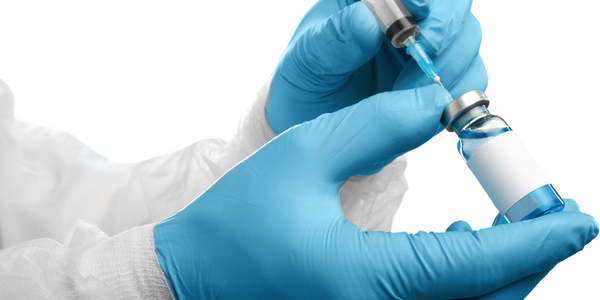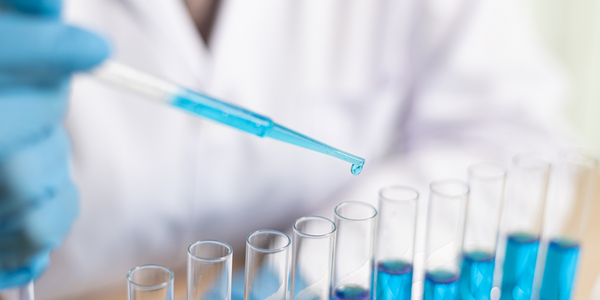Automating LC-UV-MS-Based Analytics in Therapeutic Oligonucleotide Process Development
公司规模
1,000+
地区
- Europe
国家
- Switzerland
产品
- Genedata Expressionist
技术栈
- LC-UV-MS-based analysis
- Automated MS workflows
实施规模
- Enterprise-wide Deployment
影响指标
- Innovation Output
- Productivity Improvements
技术
- 分析与建模 - 数据即服务
- 分析与建模 - 实时分析
适用行业
- 药品
适用功能
- 产品研发
- 质量保证
用例
- 质量预测分析
- 根因分析与诊断
服务
- 数据科学服务
关于客户
Roche is a leading provider of in-vitro diagnostics and a global supplier of transformative innovative solutions across major disease areas. The company is currently developing several oligonucleotide-based drugs to address a range of diseases. Their lab provides analytical support to the process chemistry department, which is responsible for optimizing oligonucleotide synthesis processes. They combine the information-rich data obtained from high-performance liquid chromatography (HPLC) and mass spectrometry (MS) to determine the number, amount, and identity of impurities in crude oligonucleotide samples. These insights are key to optimizing the oligonucleotide solid-phase synthesis process.
挑战
Roche, a leading biopharma company, was facing challenges in the analytical process of developing oligonucleotide-based drugs. The process involved the use of high-performance liquid chromatography (HPLC) and mass spectrometry (MS) to determine the number, amount, and identity of impurities in crude oligonucleotide samples. However, the number and complexity of samples combined with the laborious nature of the data analysis generated a significant bottleneck in the analytical process. The company was struggling to meet high analytical throughput demands due to the laborious manual operations for impurity quantification and any requested deeper analysis. The samples often contained many impurities, translating into the analytical challenge of assessing 20–30 peaks arising from 50–100 closely coeluting impurities. The large number of manual operations in the previous quantification process often required 5–6 hours of an analyst’s time, limiting the ability of MS experts to perform required deeper characterization in a timely manner.
解决方案
Roche collaborated with Genedata to develop and implement a tailored MS data processing workflow that increased their throughput and the level of characterization while reducing the burden on their MS experts. Genedata Expressionist® integrated seamlessly into Roche's analytical process and enabled them to directly import and process raw UV and MS data and combine these data streams for each analysis. The workflow-based approach enabled them to automate routine data processing, analysis, and reporting while still allowing their expert users to bring their expertise to bear on the critical stages of the analysis, such as identifying unexpected impurities. Automation of all routine data processing steps—such as blank subtraction, spectrum averaging, and MS quantification— enabled them to streamline and standardize their MS analyses, increasing both throughput and result quality. The data workflow presented here was created and optimized for a specific product synthesis process. However, the inherent flexibility of Genedata Expressionist enables them to use this workflow as a template that can easily be adapted for processing other molecules.
运营影响
数量效益

Case Study missing?
Start adding your own!
Register with your work email and create a new case study profile for your business.
相关案例.

Case Study
Case Study: Pfizer
Pfizer’s high-performance computing software and systems for worldwide research and development support large-scale data analysis, research projects, clinical analytics, and modeling. Pfizer’s computing services are used across the spectrum of research and development efforts, from the deep biological understanding of disease to the design of safe, efficacious therapeutic agents.

Case Study
Fusion Middleware Integration on Cloud for Pharma Major
Customer wanted a real-time, seamless, cloud based integration between the existing on premise and cloud based application using SOA technology on Oracle Fusion Middleware Platform, a Contingent Worker Solution to collect, track, manage and report information for on-boarding, maintenance and off-boarding of contingent workers using a streamlined and Integrated business process, and streamlining of integration to the back-end systems and multiple SaaS applications.

Case Study
Process Control System Support
In many automated production facilities, changes are made to SIMATIC PCS 7 projects on a daily basis, with individual processes often optimised by multiple workers due to shift changes. Documentation is key here, as this keeps workers informed about why a change was made. Furthermore, SIMATIC PCS 7 installations are generally used in locations where documentation is required for audits and certification. The ability to track changes between two software projects is not only an invaluable aid during shift changes, but also when searching for errors or optimising a PCS 7 installation. Every change made to the system is labour-intensive and time-consuming. Moreover, there is also the risk that errors may occur. If a change is saved in the project, then the old version is lost unless a backup copy was created in advance. If no backup was created, it will no longer be possible to return to the previous state if and when programming errors occur. Each backup denotes a version used by the SIMATIC PCS 7 system to operate an installation. To correctly interpret a version, information is required on WHO changed WHAT, WHERE, WHEN and WHY: - Who created the version/who is responsible for the version? - Who released the version? - What was changed in the version i.e. in which block or module of the SIMATIC PCS 7 installation were the changes made? - When was the version created? Is this the latest version or is there a more recent version? - Why were the changes made to the version? If they are part of a regular maintenance cycle, then is the aim to fix an error or to improve production processes? - Is this particular version also the version currently being used in production? The fact that SIMATIC PCS 7 projects use extremely large quantities of data complicates the situation even further, and it can take a long time to load and save information as a result. Without a sustainable strategy for operating a SIMATIC PCS 7 installation, searching for the right software version can become extremely time-consuming and the installation may run inefficiently as a result.

Case Study
Drug Maker Takes the Right Prescription
China Pharm decided to build a cloud-based platform to support the requirements of IT planning for the next five to ten years which includes a dynamic and scalable mail resource pool platform. The platform needed to have the following functions: all nodes support redundancy, ensuring service continuity and good user experience, simple and easy-to-use user interfaces for end users and administrators and good compatibility and supports smooth capacity expansion.

Case Study
ELI LILLY ADOPTS MICROMEDIA’S ALERT NOTIFICATION SYSTEM
Pharmaceutical production is subject to a strict set of enforced rules that must be adhered to and compliance to these standards is critically necessary. Due to the efforts of WIN 911’s strategic partner Micromedia, Lilly was able to adopt an alarm notification infrastructure that integrated smoothly with their existing workflows and emergency hardware and protocols. These raw energy sources enable the industrial process to function: electricity, WIN-911 Software | 4020 South Industrial Drive, Suite 120 | Austin, TX 78744 USA industrial steam, iced water, air mixtures of varying quality. Refrigeration towers, boilers and wastewater are monitored by ALERT. Eli Lilly identified 15000 potential variables, but limitations compelled them to chisel the variable list down to 300. This allowed all major alarms to be covered including pressure, discharge, quantity of waste water discharged,temperature, carbon dioxide content, oxygen & sulphur content, and the water’s pH.



